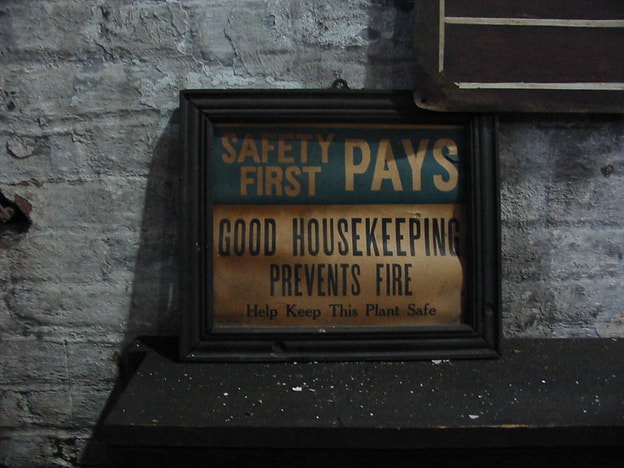RESEARCH
Occupational health history is a field transcends historiographical traditions, blending medical, labor, political, environmental, legal and social history into one narrative. It documents important history that is relevant to present-day problems. Most research concentrates on a specific industry or health concern, and is usually national in scope, covering relatively short time periods. Others concentrate on the origins of occupational health and safety during the late nineteenth century and early twentieth.
My research departs from these models, focusing on place as a subject rather than health concern or industry. I look at how occupational health developed in Nevada, and more particularly the greater Las Vegas area. Putting place at the center of the story allows for a broader context of how industry operates and uncovers the importance of location in shaping health regulation and attitudes. I concentrate on five industrial and postindustrial sites in Nevada history: the Los Angeles and Salt Lake Railroad, the Hoover Dam, chemical manufacturing at Basic Magnesium Inc. during World War II, the Nevada Test Site, and the Las Vegas Strip.
Are occupational health and safety hazards only a workplace problem? Of course, the answer is no. I noticed early in my research that health and safety problems were rarely confined to work spaces. Employees were usually the first causality, but there was also a sociocultural side that involved employers, medical experts, government officials, social reformers, and the community. Furthermore, damages that affect human beings inevitably affect the environment.
To understand this history, I developed a conceptual framework called an occupational health regime. Building upon concepts presented in Chris Sellers and Joseph Melling’s Dangerous Trade, an occupational health regime is the relationships that formed to address workplace hazards. It also takes into account the work undertaken as well as the health and safety programs established. I am particularly interested in the interactions and beliefs of health and safety among the various actors, particularly the medical sphere, and how they have changed over time. Some of my research questions include:
Using this method reveals that occupational health history is not a linear story of progress defined by an ahistorical constant: a health and safety movement trying to protect workers versus an unapologetic private sector. The benefit of a long-term, local study is that it shows a single, constant movement did not exist. The occupational health regimes were incredibly diverse in Nevada, and the differences are important to understanding this history.
Occupational health history is a field transcends historiographical traditions, blending medical, labor, political, environmental, legal and social history into one narrative. It documents important history that is relevant to present-day problems. Most research concentrates on a specific industry or health concern, and is usually national in scope, covering relatively short time periods. Others concentrate on the origins of occupational health and safety during the late nineteenth century and early twentieth.
My research departs from these models, focusing on place as a subject rather than health concern or industry. I look at how occupational health developed in Nevada, and more particularly the greater Las Vegas area. Putting place at the center of the story allows for a broader context of how industry operates and uncovers the importance of location in shaping health regulation and attitudes. I concentrate on five industrial and postindustrial sites in Nevada history: the Los Angeles and Salt Lake Railroad, the Hoover Dam, chemical manufacturing at Basic Magnesium Inc. during World War II, the Nevada Test Site, and the Las Vegas Strip.
Are occupational health and safety hazards only a workplace problem? Of course, the answer is no. I noticed early in my research that health and safety problems were rarely confined to work spaces. Employees were usually the first causality, but there was also a sociocultural side that involved employers, medical experts, government officials, social reformers, and the community. Furthermore, damages that affect human beings inevitably affect the environment.
To understand this history, I developed a conceptual framework called an occupational health regime. Building upon concepts presented in Chris Sellers and Joseph Melling’s Dangerous Trade, an occupational health regime is the relationships that formed to address workplace hazards. It also takes into account the work undertaken as well as the health and safety programs established. I am particularly interested in the interactions and beliefs of health and safety among the various actors, particularly the medical sphere, and how they have changed over time. Some of my research questions include:
- What did the work entail?
- What were the problems in health and safety?
- How did employers, workers, medical practitioners, community and local, state, and federal governments interact and respond to these hazards?
- How did company physicians, community doctors, nurses, and hospitals conceptualize and frame their respective medical realms, evolving field of occupational health, and the impact of hazardous work?
- What were the health and safety programs established?
- What can we learn from this episode in history?
Using this method reveals that occupational health history is not a linear story of progress defined by an ahistorical constant: a health and safety movement trying to protect workers versus an unapologetic private sector. The benefit of a long-term, local study is that it shows a single, constant movement did not exist. The occupational health regimes were incredibly diverse in Nevada, and the differences are important to understanding this history.
